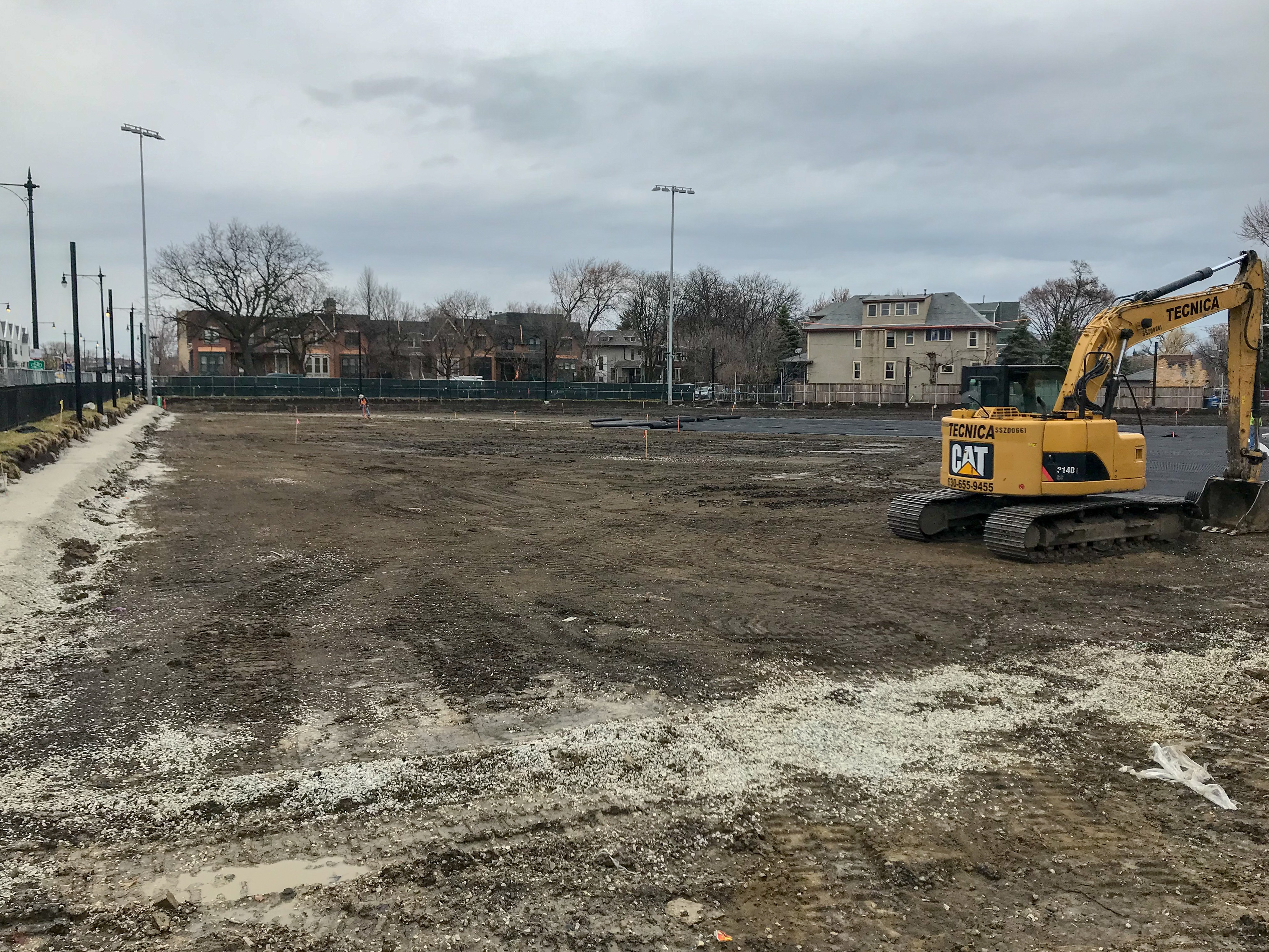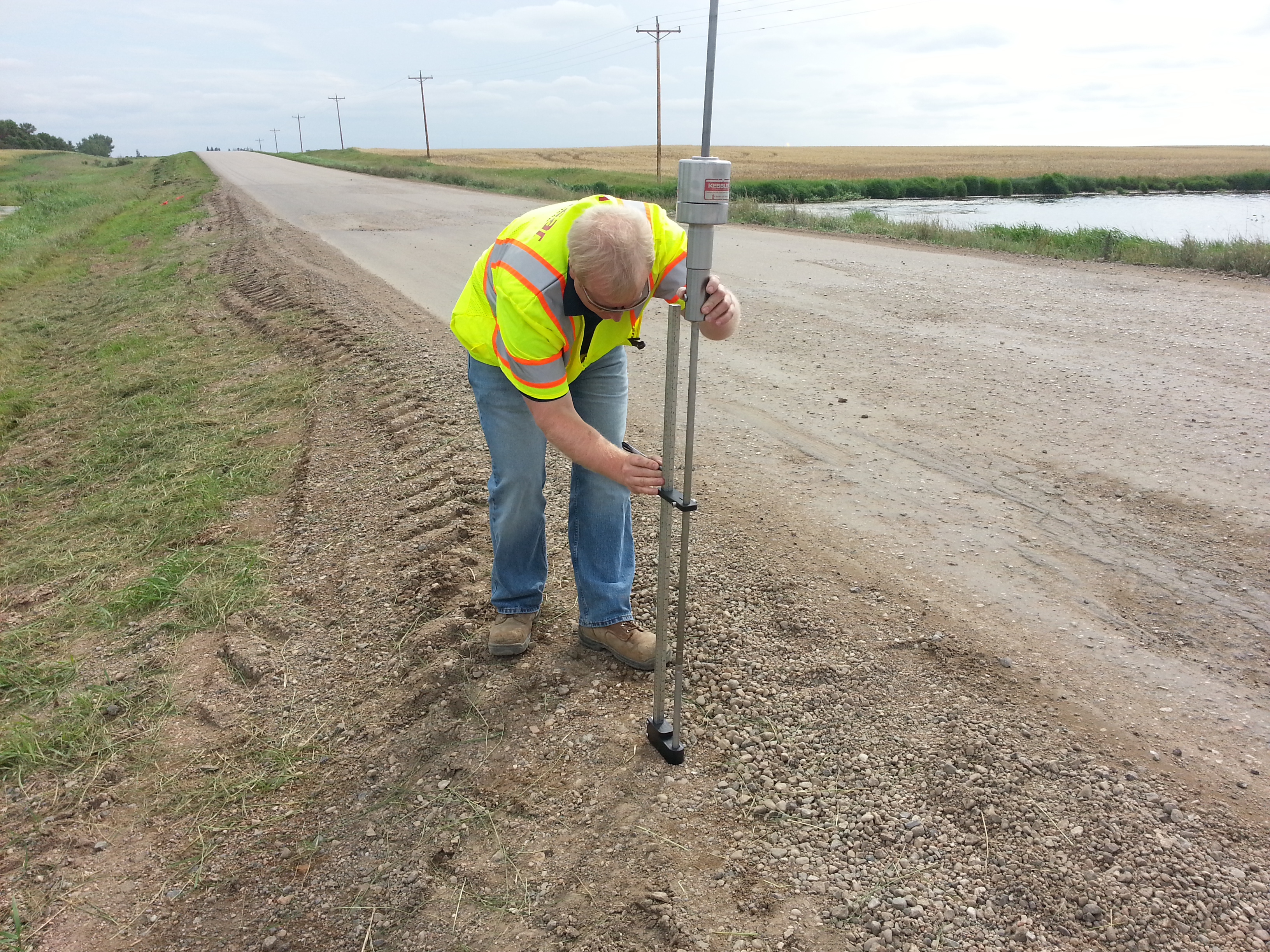CBR Values and Why They Matter
by Dr. Kasia Zamara, on June 19, 2025
Aren't we beyond CBR testing now?
 Why do I still need a CBR value when my road foundation design is based on modulus?
Why do I still need a CBR value when my road foundation design is based on modulus?
Forget soil for a moment. Instead, imagine that you’re baking a cake, and think about sweetness: you are interested in how sweet the cake will be and this will depend on the amount of sugar you put in. The measurement scale you really need is ‘degree of sweetness,’ but that’s difficult as you don’t have a method or the equipment to do so. This means you need to follow the recipe, and determine how many cups of sugar to add. But what if the recipe had the measurements in grams instead of cups? You would need to convert the grams to cups for the correct measurement and desired sweetnes. Voila!
Similarly, when working with the California Bearing Ratio (CBR) test, we estimate soil strength using CBR values, even though it's challenging to measure directly. Just as you trust the recipe and conversion chart for the cake, we rely on CBR values to understand soil strength for road design. Keep reading to learn more about how this works!
In this blog, we’ll cover:
- What is the California Bearing Ratio Test?
- CBR testing method
- CBR values explained
- How are CBR values calculated?
- Using CBR values for road design
- Why do we still use CBR values for road design?
- How is CBR normally tested on site?
- Alternative testing methods
- Minimum CBR value for road subgrade
- How we can help.
What is the California Bearing Ratio (CBR) test?
The California Bearing Ratio test (CBR test) is a penetration test developed by California State Highway Department (Caltrans) for evaluating the strength of subgrade soil, other paved areas and their used materials. CBR testing is used in the design of flexible pavements and since its development, it has been widely adopted internationally.
CBR testing method
The CBR testing method consists of forcing a cylindrical plunger to penetrate the test material at a rate of 0.05 in. per minute. The load at 2.5mm and 5mm penetration are recorded. The loads are then expressed as a percentage of a standard load obtained from identical testing of a standard, high quality granular material. This is then referred to as the CBR value.
The CBR value obtained at 2.5mm penetration is normally higher than that at 5mm penetration and this is the value used. If the value from 5mm penetration is higher, the test is repeated. If the value is still higher, then the value at 5mm penetration is the one used.
The California Bearing Ratio test can be conducted in-situ - when account must be taken of the effect of seasonal variations in moisture content - or tests can be carried out in the lab on undisturbed or remoulded samples compacted at the appropriate moisture content. Laboratory testing can simulate the subgrade moisture content and level of ‘disturbance’ expected on site during and after construction.
CBR values explained
CBR is the ratio of force required to penetrate a soil mass with a standard circular piston to a specific depth at the rate of 1.25 mm/min., to that required for the corresponding penetration of a standard material, expressed as a percentage. It provides a valuable estimate of soil strength and surface stiffness suitable for use in road foundation design.
CBR values provide a quantified estimate of soil strength and surface stiffness suitable for use in road foundation design. Understanding CBR values helps in determining the CBR value of soil and its appropriateness for construction purposes.
How are CBR values calculated?
CBR test results for soil should correctly be expressed as a percentage, e.g., CBR 2.5%. The test compares the penetration resistance of the tested soil to that of a standard high quality compacted granular material, in which typical results show a high percentage denotes a hard surface. The result is a ratio which is then multiplied by 100, to generate a percentage value.
The CBR value increases with the hardness of the surface. For example, the CBR value of clay soils generally has a CBR of 2%, while sands may reach 10%. High-quality sub-base materials typically range between 80% and 100%, making them ideal for providing strong support for the structures above.
Using CBR values for road design
So far so good, but CBR testing is a little difficult and the results vary greatly with moisture content. The design value should equate to the ‘equilibrium’ moisture content, which is the condition expected during service life of the road foundation, and it is going to require some calibration and estimation. Although the equation to convert CBR to modulus seems very neat and precise, the input value of CBR may be anything but precise.
CBR testing is rarely carried out during a regular site investigation. Instead, a CBR value is usually obtained indirectly from another in-situ test, such as the plate load test (PLT), or the dynamic cone penetrometer (DCP) test. Calibration charts enable conversion of penetration results to CBR value. Then from CBR we use the equation to estimate subgrade surface modulus. Just like from weighing scales, to cups to sweetness index.
Why do we still use CBR values for road design?
The AASHTO Guide for Design of Pavement Structures, used by many US agencies, incorporates the subgrade's resilient modulus (MR) as a critical input for flexible pavement design. This is a measure of the subgrade's elastic stiffness, indicating how much it will deform under repeated loading. It's often determined through laboratory testing so this parameter is rarely measured directly on site and CBR values are typically the route to estimating a modulus value.
The physical properties of a soil control its strength and stiffness. The relationships between these properties are complex and not fully understood. The CBR test, first introduced in the 1930s, has stood the test of time and is generally accepted to be a practical and cost-effective measure that gives an indication of both strength and stiffness.
Highway engineers and geotechnical engineers have become familiar with CBR values as a measure of subgrade strength, to the point where many engineers can give a good initial estimate of CBR values on site by pressing a thumb or heel into the subgrade surface. There is an accepted lack of precision with on site CBR measurements that gives confidence to experienced engineers for them to estimate a CBR value.
Because of its longevity, the results from many other soils tests have been calibrated to equivalent CBR values and good engineers have a concept of this. California Bearing Ratio therefore provides a common scale, understood by all and adopted as a common input value for various design methods.
How is CBR normally tested on site?
 CBR tests involving the penetration of a standard cylindrical plunger are rarely conducted as part of a standard site investigation. Instead, alternative test methods are used and the CBR value obtained using correlation charts. As mentioned above the alternative test methods most commonly used are DCP or PLTs. Correlations between these test values and CBR test results are well established and widely accepted.
CBR tests involving the penetration of a standard cylindrical plunger are rarely conducted as part of a standard site investigation. Instead, alternative test methods are used and the CBR value obtained using correlation charts. As mentioned above the alternative test methods most commonly used are DCP or PLTs. Correlations between these test values and CBR test results are well established and widely accepted.
Alternative testing methods
Additionally, there are alternative in-situ tests that can measure modulus values such as the falling weight deflectometer (FWD) tests and light weight deflectometer (LWD) tests. The latter equipment is handheld and can be correlated to the FWD equipment to improve accuracy. These dynamic tests are less common but provide a more direct measure of the modulus value of the subgrade, which aligns with the CD225 methodology for highway foundation designs.
Minimum CBR value for road subgrade
CD225 notes that subgrades with a design subgrade surface modulus lower than 30 MPa are unsuitable to support construction of a pavement. That equates to a CBR value of approximately 2%. Below that, subgrade replacement or subgrade improvement is necessary. CD225 includes mechanical stabilisation using geogrids as one suitable option.
How we can help
Tensar can provide specific advice on the use of Tensar geogrids for mechanical stabilization over weak and variable subgrade soils. Our field team and many of our distributors are equipped with DCPs and prepared to help you with assessing your site and developing potential solutions. If you’d like to schedule a site visit, including DCP testing if appropriate, contact us today.




.jpg?width=400&height=400&ext=.jpg)